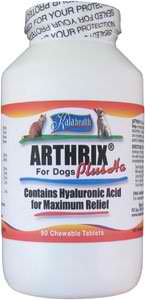
Just like most humans, our pets can also suffer from osteoarthritis. Cats and dogs especially are susceptible to osteoarthritis. But what is osteoarthritis in bulldogs? And how do our pets acquire the disease? There are many types of arthritis, but is the most common type which affects cats and dogs. Osteoarthritis is the progressive degeneration of the joints which leads to inflammation and deterioration of the joint. This disease can cause severe pain and discomfort, which then limits your pet’s mobility.  Normally, a joint is covered with a thin layer of cartilage, and fluids. The cartilage acts as a shock absorber, and the fluids act as lubricant. As your pet’s age progresses, the cartilage may become so thin, that it the bone underneath it becomes exposed. This in turn causes inflammation, and then pain.
Normally, a joint is covered with a thin layer of cartilage, and fluids. The cartilage acts as a shock absorber, and the fluids act as lubricant. As your pet’s age progresses, the cartilage may become so thin, that it the bone underneath it becomes exposed. This in turn causes inflammation, and then pain.
Osteoarthritis commonly affects the hip joints, knees, and elbows. Older pets are more susceptible osteoarthritis as the disease may progress with age. However, puppies may also acquire osteoarthritis with repeated trauma to a particular joint, or due to hereditary factors. To know if your pet is suffering from osteoarthritis, there are some signs and symptoms to watch out for in your pets. Osteoarthritis in bulldogs can cause a significant amount of pain. However, our pets display pain differently than us humans, and may sometimes even try to tolerate it. Pets, especially dogs, may exhibit discomfort by excessive sleeping, reluctance to walk, difficulty in standing up or getting up from sitting or lying down. Your pet may also become reluctant to jump or climb up stairs or furniture.
Finally, your dog may suddenly have a change in demeanor or attitude due to the chronic pain and discomfort. If you think your pet is suffering from osteoarthritis, immediately contact your veterinarian and schedule an examination. Your veterinarian can perform a physical exam on your pet and even an x-ray to diagnose if your pet does in fact suffer from osteoarthritis. If the diagnosis turns out to be positive, your vet may then recommend natural products to slow down the progress of the disease, or prescribe medication to deal with the pain and discomfort.

